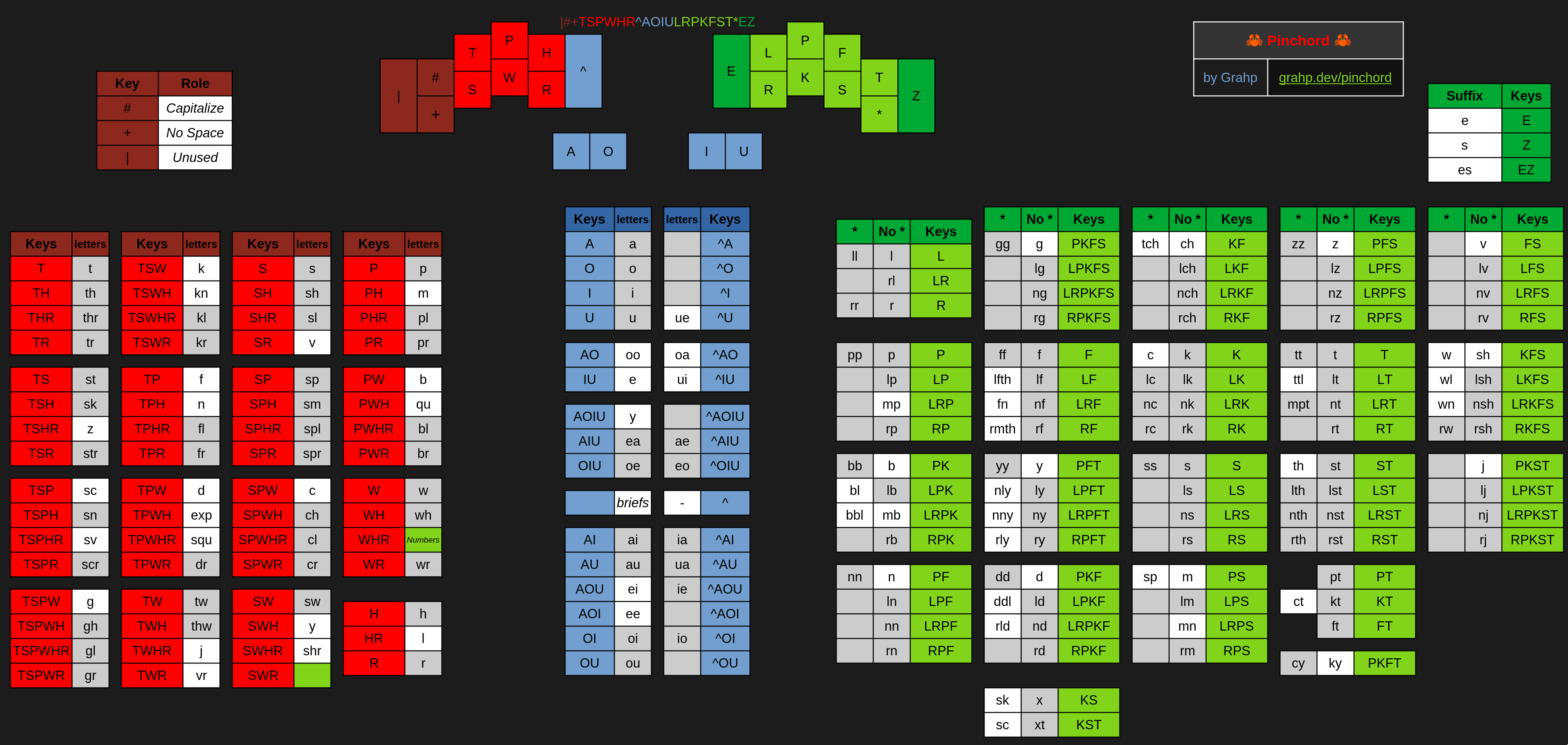Pinchord
Pinchord is a chorded typing system/orthospelling steno theory designed to harness the power of phonetic steno for normal(ish) people.
For the steno crowd, see Why Orthospelling.
Rationale
- Steno is awesome. The speed and ergonomics are unmatched - Chording is just awesome
- Traditional phonetic steno is extremely difficult to learn
- Phonetic steno is optimized for court reporting. I am not a court reporter, I'm a programmer and yapper
Layout
Note that Pinchord is in development and that this graphic is missing a few things (notably h and q :p)

Learning
I'm learning Pinchord right now, you can see that on the Pinchord Progress page.
It's not done yet, but if you'd like to become a Pinchord guinea pig, reach out :)